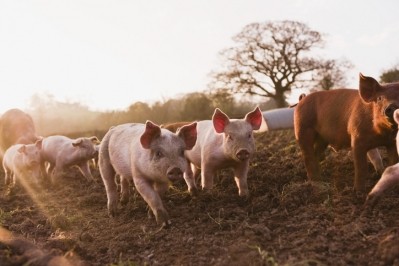Guest Article
Are we ready and responsible enough to welcome swill back into the food chain?

Resource Efficient Food and Drink for the Entire Supply Chain (REFRESH) has been an admirable advocate of helping to address our food waste crisis. In a recent press release, it argues the merits of allowing non-ruminant omnivores to be fed with food waste sourced solely from specialist licensed processing facilities. I understand how, in theory, food waste may be regarded as an untapped resource for feedstock. However, my thoughts turn to the need for rigorous scientific testing, economic strategies and risk management because food waste use in any feed chain comes with considerable limitations.
Without detailed research and data, taking the swill route may means going blindly into an untested regime.
Don’t forget the health risks
The UK’s foot and mouth epidemic in 2001 was caused by swill feeding. Despite a new guise, the practice of using food waste for feed remains concerning, the foremost reason being the ‘cannibalism effect’ of transmissible spongiform encephalopathies (TSEs).
Rigorous control measures must be in place to mitigate disease risks and safeguard the food chain from threats such as classical swine fever, African swine fever (currently sweeping across Asia), foot and mouth or TSEs like bovine spongiform encephalopathy (BSE). All could decimate animal stocks and cause adverse effects on human consumers. There are two food chains at risk, not just one. TSEs are well known to survive heat treatments; even though REFRESH assures they are not transmissible in farmed pigs, poultry or fish. Yet, other communicable diseases still pose a significant risk.
If this type of food waste is deposited at feed treatment plants, will the science and the operations be up to scratch to undertake rigorous species segregation?
Clarify costs
There is an extensive and varied supply chain across the EU, so applying a very non-geographically relevant Japanese solution [see REFRESH press release reference] is a rather simple blanket approach – only achievable at substantial cost. Feedstock produced using swill would probably require subsidies to establish a commercially viable feed operator business.
Let’s also ask if savings would be transferred to the disposal of the food waste and its further processes. For example, if a UK restaurant throws their excess food into the bin, it is collected by the local council, a service funded by council tax and business rates. (It is true, that some large food establishments may have separate food collection that is streamed to be processed by anaerobic digestion, but most do not.) To process this collective waste food by a newly designed swill feed operator program means that yet more cost is incurred; there’s streaming of waste, supplying special bins and vessels, transport, and whatever (hopefully robust) further segregation methods are involved at the plant. Furthermore, using centralized swill feed operations may not necessarily incur a discount on existing rates or taxes. Therefore, the consumer is likely to bear the financial burden as a food waste levy.
Measure twice, cut once
It is a simple deduction - if we do not know what the centralized processing costs are going to be, then we do not know how all the canteens, restaurants, domestic households, and other food-based businesses are going to be charged to partake in this type of food waste processing. Without detailed research and data, taking the swill route may means going blindly into an untested regime.
I urge key sector professionals and advocates that champion the eradication of food waste, to question the risk versus the reward. Let’s not embark on a new ‘strategy’ without a tried and tested plan. We must be certain that whatever actions are taken, they do not endanger biologically and environmentally, or burden economically or socially. The very nature of sustainable solutions require that all these aspects are met responsibly and work in harmony to achieve good.
Paul Featherstone is also chairman of the European Former Foodstuffs Processors Association (EFFPA).
The views in this article do not necessarily reflect the opinions of the FeedNavigator editorial team.










